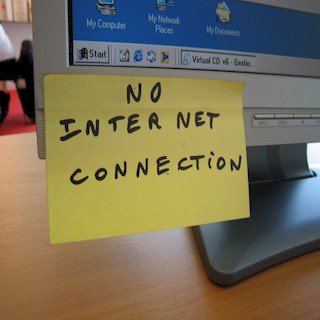 The Internet and wireless access today, is considered a mandatory staple, and taken completely for granted. The original concept of the Internet, its beginnings, can be traced back to the collective efforts of a variety of individuals, from around the globe.
The Internet and wireless access today, is considered a mandatory staple, and taken completely for granted. The original concept of the Internet, its beginnings, can be traced back to the collective efforts of a variety of individuals, from around the globe.
The concept of electronic communication between devices, began back in the late 1960s, when the U.S. military was wanting to create a network of computers, that were able to somehow talk to each other. This network, was known as ARPANET. Fast forward to the mid 1980s, where the National Science Foundation, improved on the networks transmission speed.
By the 1990s, Internet service providers (ISP’s) along with websites, became available. This was when Internet access was offered to the public, which ushering in the age of the World Wide Web (WWW), The Information Superhighway.
The Greatest Technological Breakthrough
Although we now treat the personal computer and the Internet as common appliances, the space age concept that it represents, remains alien in nature.
The Internet, is the most significant technological breakthrough that the human race has developed, propelling it fast forward into the 21st century.
The technology that is the Internet, has completely altered the way that we think, work, live, and play. It’s become such a necessity in our daily lives, that we no longer give its significance a second thought.
We use the Internet for social communication, our finances, dating, entertainment, news, research, and everything else in between.
In The Beginning…
The concept and the development of the Internet, is the biggest step taken to combine man and machine, which took decades to perfect. What it remains is a baffling complex theory to explain, in a non-technical manner.
In the late 1960s, the Advanced Research Projects Agency Network (ARPANET), was a project of the U.S. Department of Defense.
What they did was linked together a network of computers to each other, referred to as ARPANET, where the networked computers were programmed to remain redundant.
The reason for this network redundancy, ensured that if any one of the computers on the network somehow became damaged, in a large scale military conflict, the remaining computers on the network, would still be able to communicate with one another.
The military understood the potential of computer networks back then. They also understood that in any military conflict, reliable battlefield communication was paramount, this for a successful outcome.
This is what led the military, to research and develop a method to reliably link and network computers, for such a scenario.
For Commercial Use
By the mid 1980s, what the National Science Foundation created was NSFNET. What this used was the ARPANET technology, which was originally developed for military application, to allow universities and researchers, to electronically connect to each other.
By the late 1980s, NSFNET was no longer capable of handling the massive amounts of data, that was being streamed and transferred.
So what the National Science Foundation did, was made improvements to the network, this to speed it up, this to quicken the transfer of information online.
This improved high-speed network technology was considered a key advancement, which made the future of everyday Internet access practical and affordable.
What this rapid high-speed network did, was laid the foundation for the application of commercial Internet access, that we use today.
Hooking Up To The Internet
In the 1980s when disco was prevalent, those who had Internet access were comprised mainly of scientists and researchers.
By the early 1990s, companies known as Internet service providers (ISP’s), began offering Internet access to the everyday home user.
This was the key transitional point, where it allowed the average individual with a personal computer, who had a modem that was connected to a telephone line, to get Internet access in their home.
Marketing’s Greedy Teeth
The World Wide Web (www) concept that we know today, was refined in the 1990s by a group of European researchers.
Their goal was to develop a way for them to work more closely together. To make the sharing of their research, more easily accessible among the other researchers.
The first publicly accessible website, was created in 1993. By the mid 1990s, there were over 30 million people, who had Internet access.
What this growing number of “Internet surfers” did, was enticed large corporations to invest their marketing dollars into website design, as a method of promotion.
This in the hopes to provide information about their products and services, to find ways to market them more affordably and efficiently.
As a result, what every company or marketer has today, is some type of Internet presence. It’s now become a standard requirement, for every business model to have online representation on the Internet.
Internet Access Part 1
The birth of the Internet, can be attributed to the combination and the sharing of individual ideas, this along with the effort of thousands of people from around the world, and not just one individual.
If it wasn’t for this collective effort, the Internet as we know it today, wouldn’t exist. Most now can’t imagine, what life would be like without the Internet and wireless access. There would be mass confusion and chaos, not knowing what to do, or realizing why.
For almost everyone, the Internet has now become their sole source of personal communication, socializing, banking, investing, getting driving directions, entertainment, and education.
It’s become exclusive for online shopping, news, hard to find information or items, health concerns, so everything.
The Internet and its evil stepchild social media, has now completely overtaken any other form of communication, and the current generation can’t imagine a day without it.
Internet access has become such a common necessity, that our lives would completely spiral without it, as we would literally be lost.